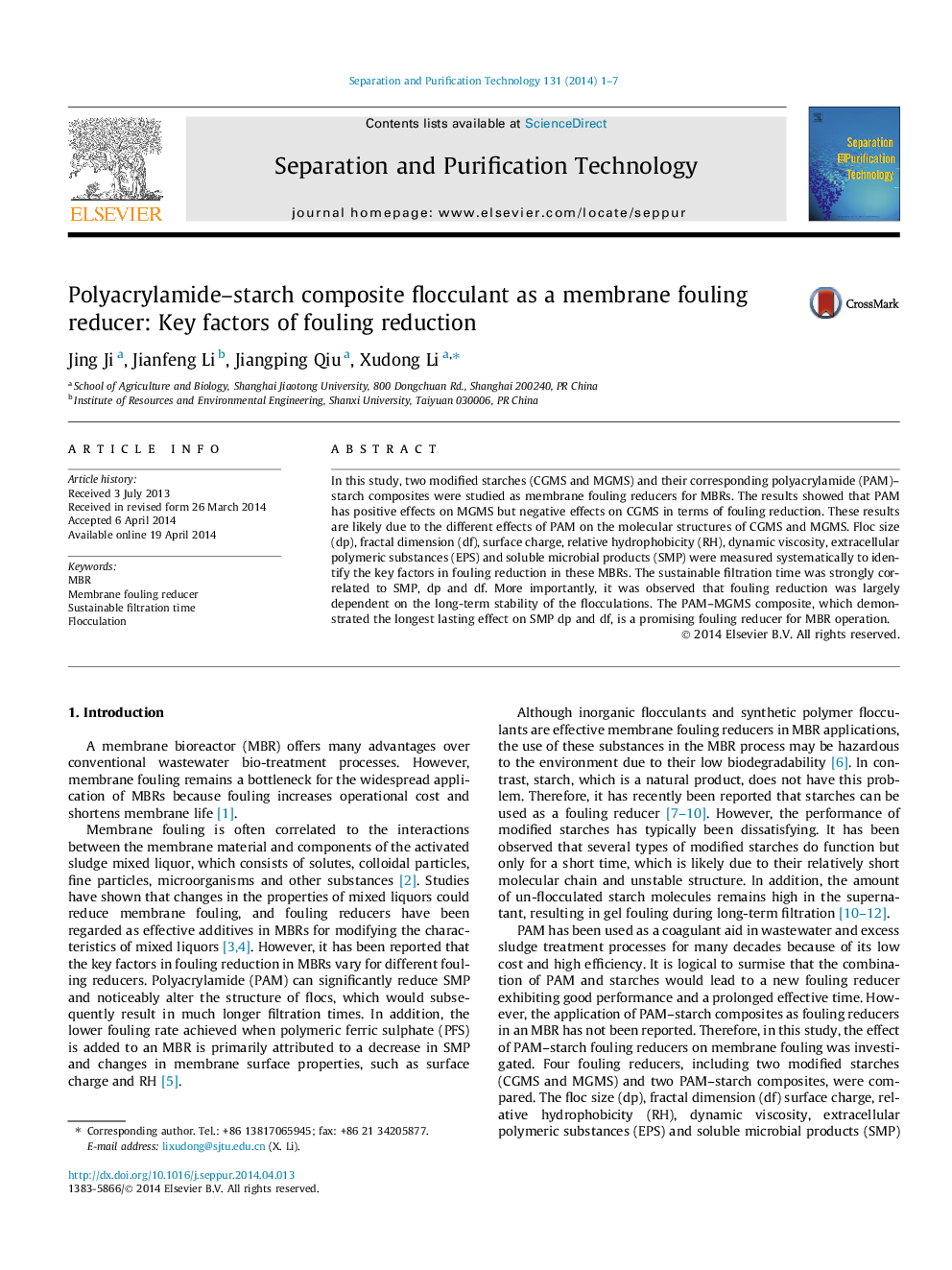| Article ID | Journal | Published Year | Pages | File Type |
|---|---|---|---|---|
| 641131 | Separation and Purification Technology | 2014 | 7 Pages |
•PAM has positive effects on MGMS starch but negative on CGMS in fouling control.•Fouling reduction was through modification of the sludge properties: SMP, dp and df.•Long-term operation performance depends on the effect duration of the flocculants.•PAM–MGMS flocculant increases MBR filterability significantly in long-time tests.
In this study, two modified starches (CGMS and MGMS) and their corresponding polyacrylamide (PAM)–starch composites were studied as membrane fouling reducers for MBRs. The results showed that PAM has positive effects on MGMS but negative effects on CGMS in terms of fouling reduction. These results are likely due to the different effects of PAM on the molecular structures of CGMS and MGMS. Floc size (dp), fractal dimension (df), surface charge, relative hydrophobicity (RH), dynamic viscosity, extracellular polymeric substances (EPS) and soluble microbial products (SMP) were measured systematically to identify the key factors in fouling reduction in these MBRs. The sustainable filtration time was strongly correlated to SMP, dp and df. More importantly, it was observed that fouling reduction was largely dependent on the long-term stability of the flocculations. The PAM–MGMS composite, which demonstrated the longest lasting effect on SMP dp and df, is a promising fouling reducer for MBR operation.
